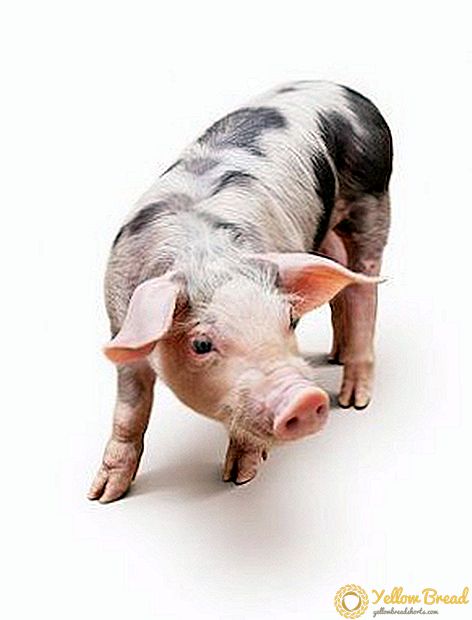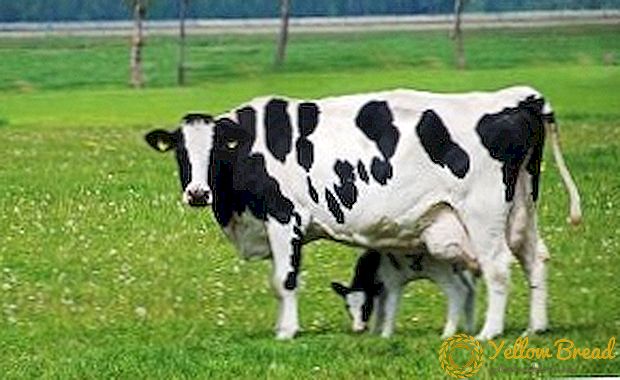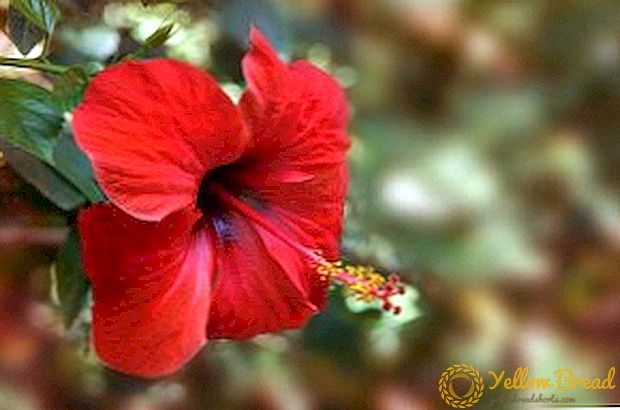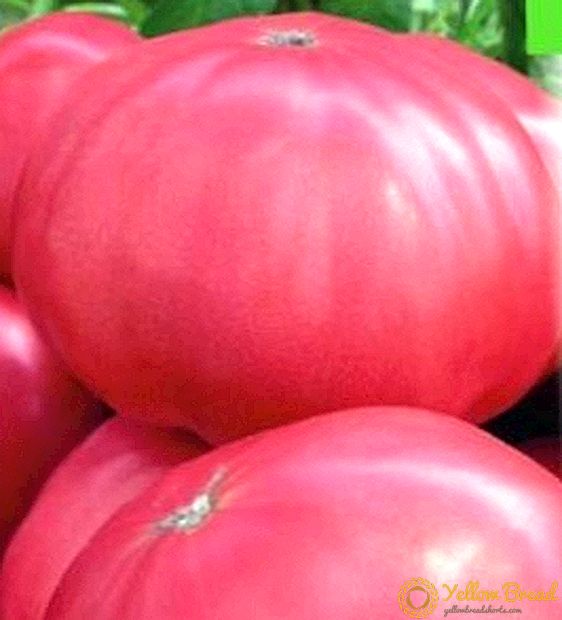 Today we will discuss the breed of pigs meat direction Pietren. This breed is widely used in Europe, due to its productivity and a small amount of waste during slaughter.
Today we will discuss the breed of pigs meat direction Pietren. This breed is widely used in Europe, due to its productivity and a small amount of waste during slaughter.
We will find out what the Pietrain breed is, discuss the profitability of cultivation, and also talk about the conditions of detention and the intricacies of breeding.
- Description and features of the breed
- External characteristics
- Productive qualities
- Pros and cons of breed
- pros
- Minuses
- How to choose healthy pigs when buying
- Conditions of detention
- Animal care
- Feeding ration
- Diseases: prevention and treatment
- Rearing
Description and features of the breed
Pietrain - breed of pigs of the bacon direction, the characteristic and photo of which will be presented below.
This breed was bred in Belgium by crossing several meat breeds. As a result of a decade of work, the Pietrain breed was obtained, which possessed the qualities that the creators thought. 
External characteristics
A large animal whose body is elongated in the shape of a cylinder. The musculature is well developed, which is visible to the naked eye.The head is small in size, which has a positive effect on the percentage of pure meat. The ears are erect. The back is wide, has a groove along the spine.
It is worth paying attention to the color, which is represented by black large patches on a white “background”.
Productive qualities
It is worth starting with the fact that meat of this breed is considered dietary, and this increases its value.
An adult boar weighs from 200 to 250 kg, the uterus - up to 200 kg inclusive. However, it happens that some individuals may exceed the indicated weight parameters by several tens of kilograms.
Females at a time give no more than 10 piglets, which do not differ vitality. Gilts reach a mass of 90 kg at the age of 8 months, so the breed is considered mid season.  Speaking about weight gain, it is worth considering that Pietrain in this plan is lagging behind other breeds, gaining no more than 500 grams per day. It is also worth considering that the feed consumption per 1 kg of live weight is in the region of 5 feed units.
Speaking about weight gain, it is worth considering that Pietrain in this plan is lagging behind other breeds, gaining no more than 500 grams per day. It is also worth considering that the feed consumption per 1 kg of live weight is in the region of 5 feed units.
Pros and cons of breed
Next, we will talk about the advantages and disadvantages of Pietrain, which are related both to our climate and the amplitude of temperatures, and to the characteristics of the breed.
pros
- High yield of pure dietary meat at slaughter (about 70%).
- The breed is resistant to circovirus (an infectious disease).
- Can not accumulate large amounts of fat, regardless of the diet and caloric intake.
- They are excellent in the role of genetic material, preserving the sign of meatiness in the offspring.

Minuses
- Badly acclimatized.
- Sensitive to extreme heat or cold, due to the absence of fat.
- High sensitivity to stress during transportation and during maintenance.
- The dependence of meat quality on the quality of feed.
- Sows not only give a small number of offspring, but also cannot provide it with milk.
- Very slow weight gain in gilts.
How to choose healthy pigs when buying
We proceed to the selection of young animals, on which not only the productivity, but also the rate of weight gain will depend.
Let's start with appearance. Firstly, the color suit should correspond to the specific parameters. Even the smallest gilt has black spots. Secondly, there should be no blood stains and any rash on the skin. The pig should stand firmly on its feet, and its hooves should have a bright brilliant color.
Next, look at correct bite. It is not strange, quite a lot depends on the bite, as the young with the wrong bite feeds worse, respectively, slowly gaining weight.  Focus on behavior. Piglet must be alive, move, actively eat and drink water. A healthy animal should not constantly sleep or sit, so pay attention to this or ask the seller to call for a pig so that it moves.
Focus on behavior. Piglet must be alive, move, actively eat and drink water. A healthy animal should not constantly sleep or sit, so pay attention to this or ask the seller to call for a pig so that it moves.
We evaluate the selection. Feces and urine should go free. Liquid healthy animal painted in straw color.
After that, it is worth comparing development with age. Mumps should not be very large or small, which will indicate deviations. Also pay attention to the frequency of breathing, which should be up to 90 per minute. More frequent breathing indicates lung disease.
It should be understood that unscrupulous sellers will get out in every way, saying that it will all pass, just the weather is not that, stress, and so on. You should not be “led” to such persuasions, because a good product does not need excuses. 
Conditions of detention
The most important thing to take care of when keeping a Pietrain is temperature and humidity.
Do not think that these pigs will tolerate cold sheds, as domestic. They need a temperature within 17-28 ° C. If it is cold in the pigsty, the animals will get a cold. If it's too hot, heatstroke.
Do not forget that the presence of proper ventilation is necessary that the pigsty was not damp and other fungi. Ignoring this rule, you will get weak pigs that will be “awarded” with various lung diseases.
In order to maintain the desired temperature, it is necessary to make external or internal insulation with the help of any foam blocks. Ventilation should not create a draft, and properly supply the room with fresh air.
Animal care
Care is the regular replacement of the litter, which should always be dry. Wet hay or straw is a source of pathogens. Regularly clean the water tanks and the trough into which the feed is applied.  In addition, pigs need to be checked for the presence of parasites and diseases, which is easiest to do, while walking in the aviary. You can also assess the weight gain to calculate the moment of slaughter.
In addition, pigs need to be checked for the presence of parasites and diseases, which is easiest to do, while walking in the aviary. You can also assess the weight gain to calculate the moment of slaughter.
In the summer, when the temperature just rolls over, the output will be a shower at room temperature, which will cool the pigs and relieve potential parasites.
Feeding ration
From the diet depends on whether you get a lot of meat or not, how it will taste and how valuable for your body.
Adult animals are fed with high-calorie foods that will give the maximum daily weight gain, namely:
- sugar beet;
- corn;
- legumes (not greens, but seeds);
- feed;
- leftovers from the table (only natural, without fragrances and dyes).
Also, the diet should be saturated with vitamins and microelements, which can be achieved by buying special nutritional supplements.
It should be understood that Pietrain can not overeat, as a result of which severe obesity will begin, so let's feed as much as the animal can eat. In this case, pay attention to how much food is left, remove excess.  Do not forget about feeding the young, which the "mother" can not provide the right amount of milk.
Do not forget about feeding the young, which the "mother" can not provide the right amount of milk.
On the second day after birth, the pigs are given purified water and mineral supplements. On day 3 - cow's milk (only homemade, no shopping option). When the young are one week old, you can give porridge from oats. In 1.5 weeks we give hay bean (fresh, not refractory).
From 11 to 14 days we feed with grated fresh carrots. It is advisable to use not fodder, but table varieties. From 15 to 19 days we use boiled beets, grated on a coarse grater. From the 20th day we start to give juicy grass, and from 25th - boiled potatoes. Then gradually transfer to the "adult" food, focusing on the development of young.
Diseases: prevention and treatment
Hypothermia, pathogens and parasites can "reward" animals with diseases of varying severity. Next we will talk about what you need to be prepared for while growing the Pietren.  Peptic ulcer disease. Appears in young animals, which are too early to use food intended for adult piglets. Signs: vomiting, food residue in feces, refusal of food. It is treated by isolation from other animals, so that daily starvation and laxative preparations can be given.
Peptic ulcer disease. Appears in young animals, which are too early to use food intended for adult piglets. Signs: vomiting, food residue in feces, refusal of food. It is treated by isolation from other animals, so that daily starvation and laxative preparations can be given.
Gastroenteritis. Occurs in young animals at the moment when they begin to give "adult" food. Roughly speaking, this is a reaction to feed for adult pigs. Symptoms: fever, vomiting, liquid excrement, poor mobility. It is treated with laxatives, after which you need to feed liquid porridges. If all else fails, we turn to the veterinarian to prescribe antibiotics
Bronchitis. Familiar disease that is associated with hypothermia and drafts. Signs: fever, discharge from the nostrils (snot), refusal of food. Initially, you need to transfer animals to a warmer room, warm them. Further antibiotics, streptocide and ammonium chloride are used.
There are also diseases that cannot be cured at home, so if your animals had blood in their excrement, for unknown reasons, the temperature rose, body ulcers or a rash appeared - call the vet immediately to save the animal.
Rearing
For a start, it is worth making sure that the sow is healthy, otherwise all livestock will die. Analyze the condition of the pigsty, on which the health and survival of the young.  It is better to cross breed with other breeds in order to improve basic qualities. Hybrids with Duroc pigs have better meat quality, and with landrace breed, the best growth and rate of weight gain.
It is better to cross breed with other breeds in order to improve basic qualities. Hybrids with Duroc pigs have better meat quality, and with landrace breed, the best growth and rate of weight gain.
It is better to carry out the case in two approaches, giving two days before this for the "acquaintance" of future parents. After fertilization is performed, the sows are given the best conditions and are given protein-rich food. You should also take the sow on walks in the pen, so that the limbs are not atrophied.
After birth, you must carefully examine the gilt. If some of them were born weak - pick up and nurse in a warm place using the above feed. Strong gilt can be left with mom.
Now you know what is interesting breed Pietrain for small farms. The breed, though not distinguished by unpretentiousness, however, makes it possible to get both tasty and dietary meat, which is much higher than the products of domestic pig breeds. Please note that the described requirements are an axiom, their non-compliance leads to a loss of livestock.






